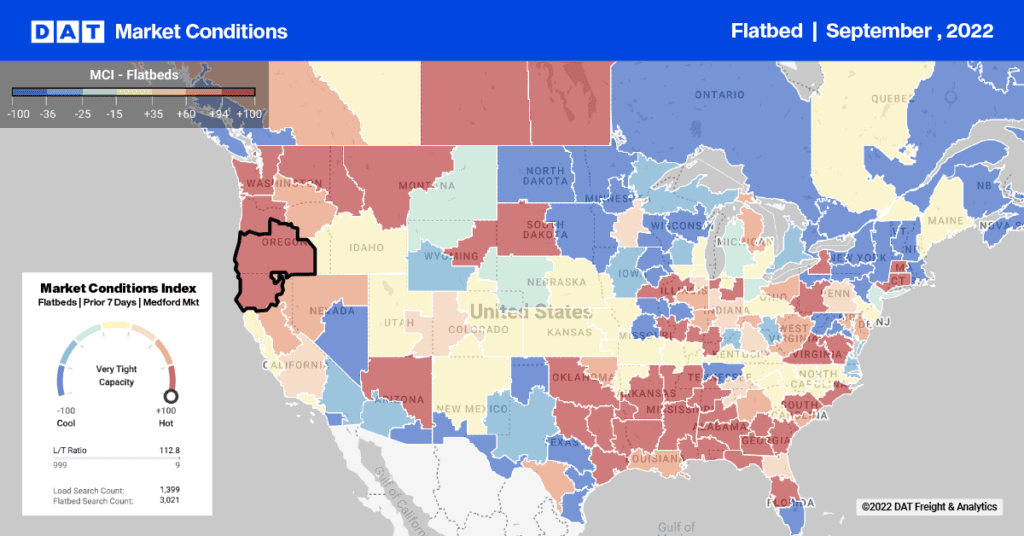It’s heartbreaking to see the news feeds and images from flood zones in and around Baton Rouge, LA. Dozens of people have lost their lives, and thousands have lost their homes, their businesses and all their possessions. It will take a long time to rebuild.
For now, what is needed is disaster relief. Many truckers have responded to the call from FEMA and other agencies, to bring food, clean water and emergency supplies into the affected areas, and my hat is off to them. It’s dangerous work, and you don’t really know how long it will take to get to your destination, to get unloaded, and to get back out. You’re almost certain to leave empty.

Coast Guard photo by Petty Officer 1st Class Melissa Leake, August 15 2016
It won’t surprise anyone to learn that rates rose sharply on inbound lanes heading into Southern Louisiana last week. I will share a couple of graphs from DAT RateView:
1. Shreveport to Baton Rouge
Shreveport is evidently a key staging area for loads into Baton Rouge, and average van rates shot up $189 on that lane in the past seven days. That’s a 32% increase on a lane where rates are typically stable to slightly lower in August compared to July. Reefer rates rose on that lane, as well, up 28% from an average of $643 to $843, but some reefer loads paid as much as $1,271. That’s double the July average, on a lane where the highest rates haven’t hit $800 any time in the past year.

You may notice from the above graph that Baton Rouge is defined as part of the New Orleans market in DAT RateView, even though the two cities are 80 miles apart. New Orleans itself is not flooded, as it was during and after Hurricane Katrina in 2005, so trucks may be staging in NOLA for short hauls into the flood zone. Average rates from New Orleans to Baton Rouge rose only 14% in the past week, however, according to RateView data. That’s not a dramatic shift for this time of year.
2. Dallas to Shreveport
Another lane that rose dramatically was Dallas to Shreveport, up 26¢ per mile in the past week. That’s a 13% difference, which on the surface doesn’t seem to be a big change compared to the Shreveport to Baton Rouge lane. However, the 13% change yielded the highest average rate on this lane in over 13 months, and last year at this time, the rate had dropped 21¢.

Interestingly, the rate from Dallas to Baton Rouge is up only 10¢/mile, and the Houston to Baton Rouge rate has dropped a bit lower in the past week. This tells us that there is not as much freight being staged in Houston, beyond the usual traffic on that lane.
Rates are derived from DAT RateView, a database of actual rate agreements between freight brokers and carriers, as well as shipper-to-carrier contract rates based on actual freight bills.


